Project Name
The BeldiPosted in
Interior DesignLocation
Design Studio
Chan + EayrsArea (sqm)
265Completed
2018| Detailed Information | |||||
|---|---|---|---|---|---|
| Project Name | The Beldi | Posted in | Interior Design | Location |
Shoreditch, London |
| Design Studio | Chan + Eayrs | Area (sqm) | 265 | Completed | 2018 |
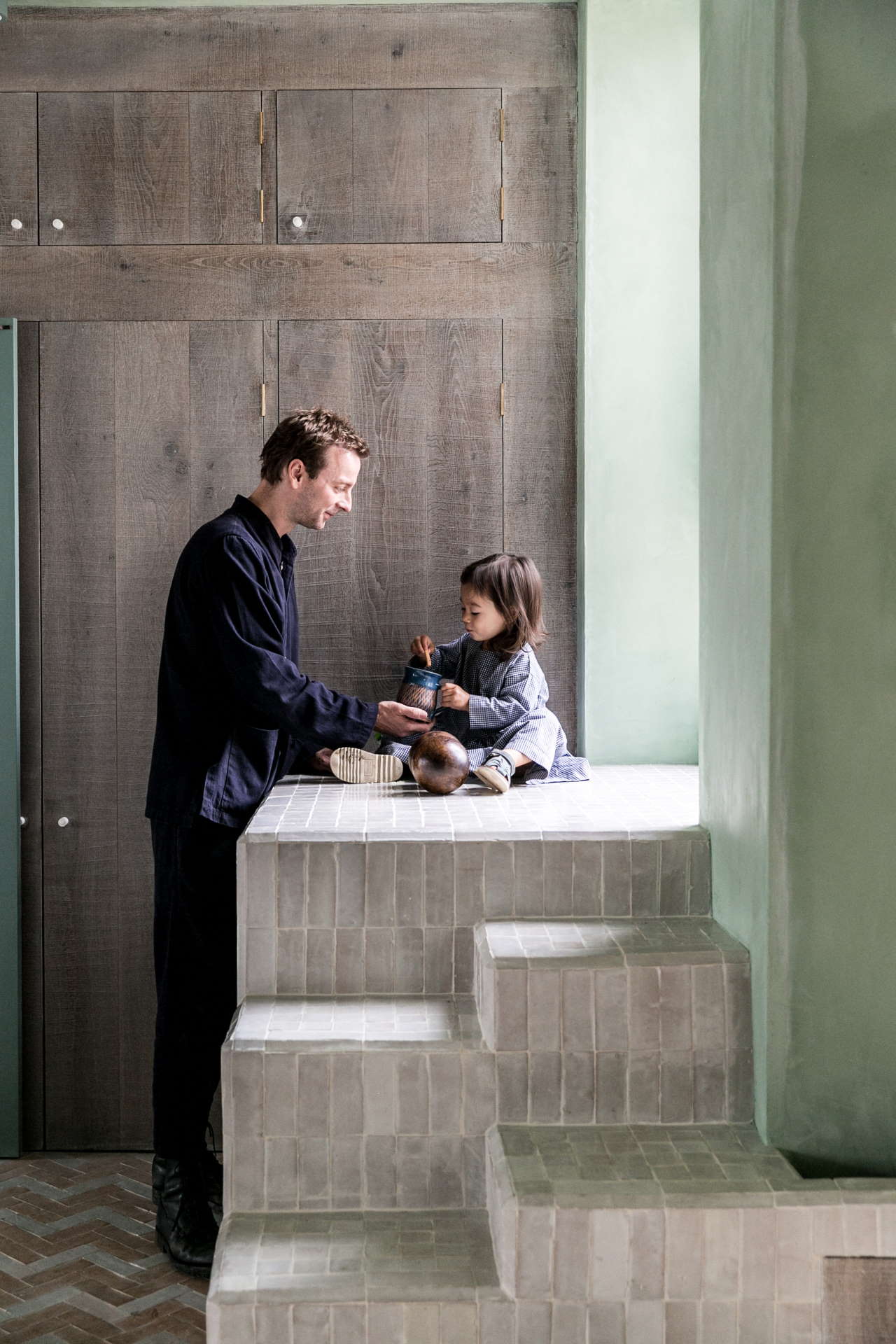
Photo by Taran Wilkhu.
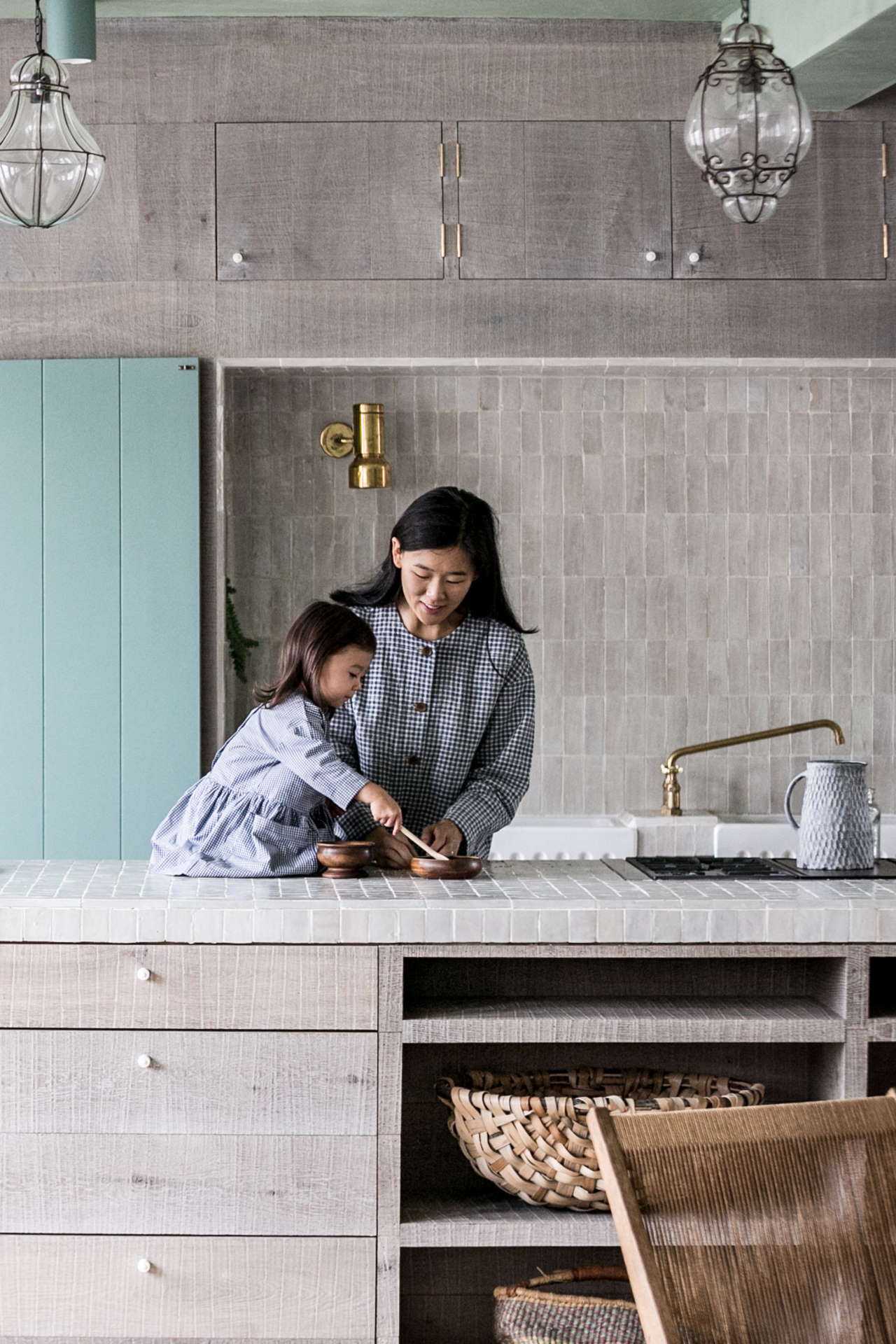
Photo by Taran Wilkhu.
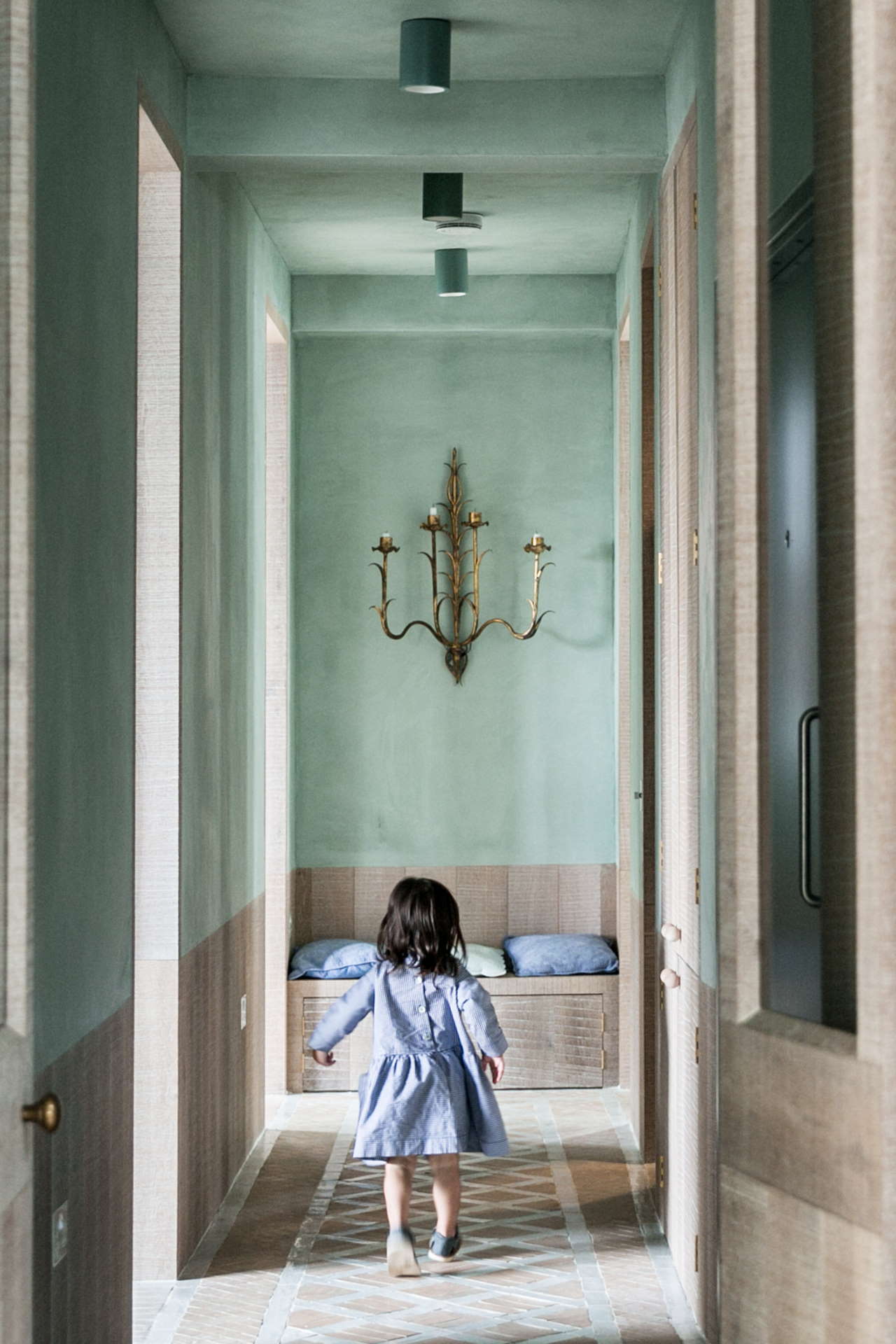
Photo by Taran Wilkhu.
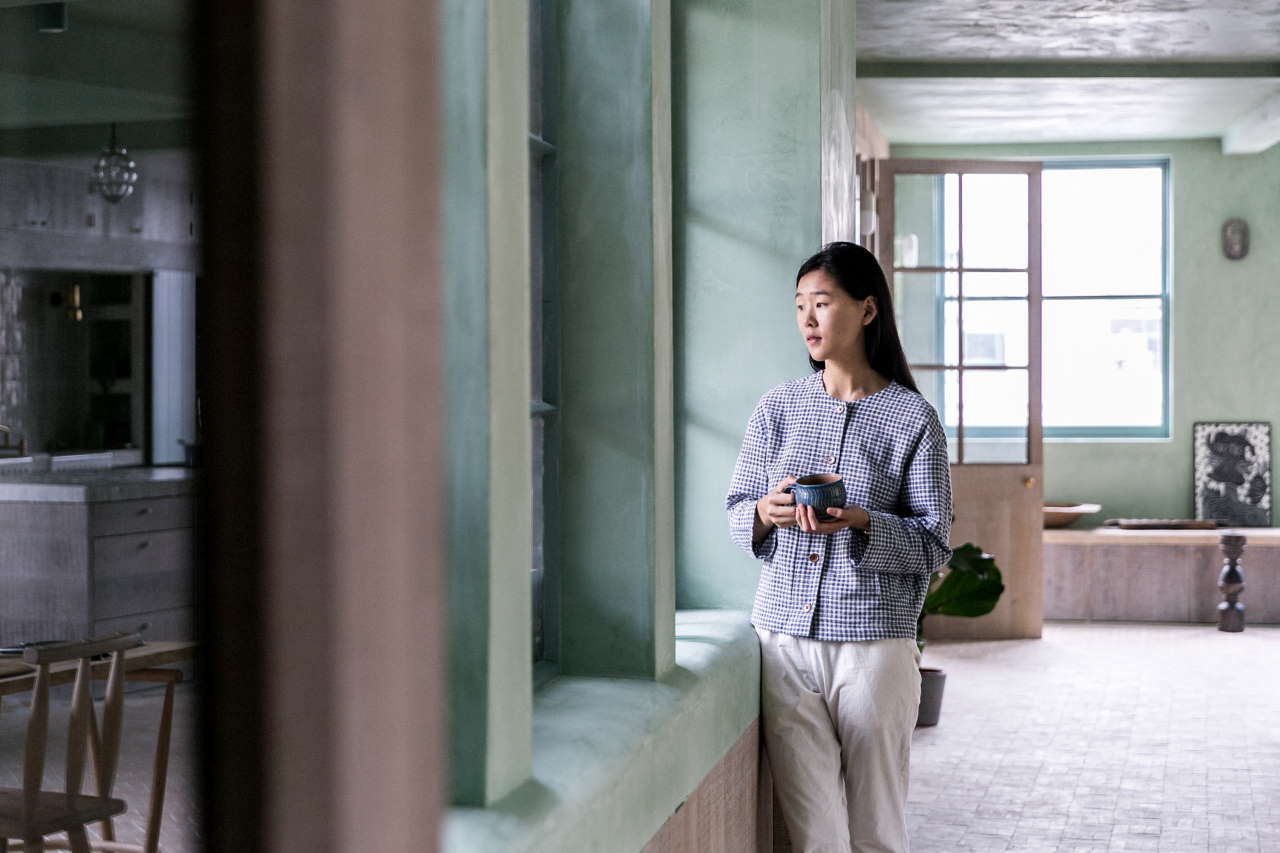
Photo by Taran Wilkhu.
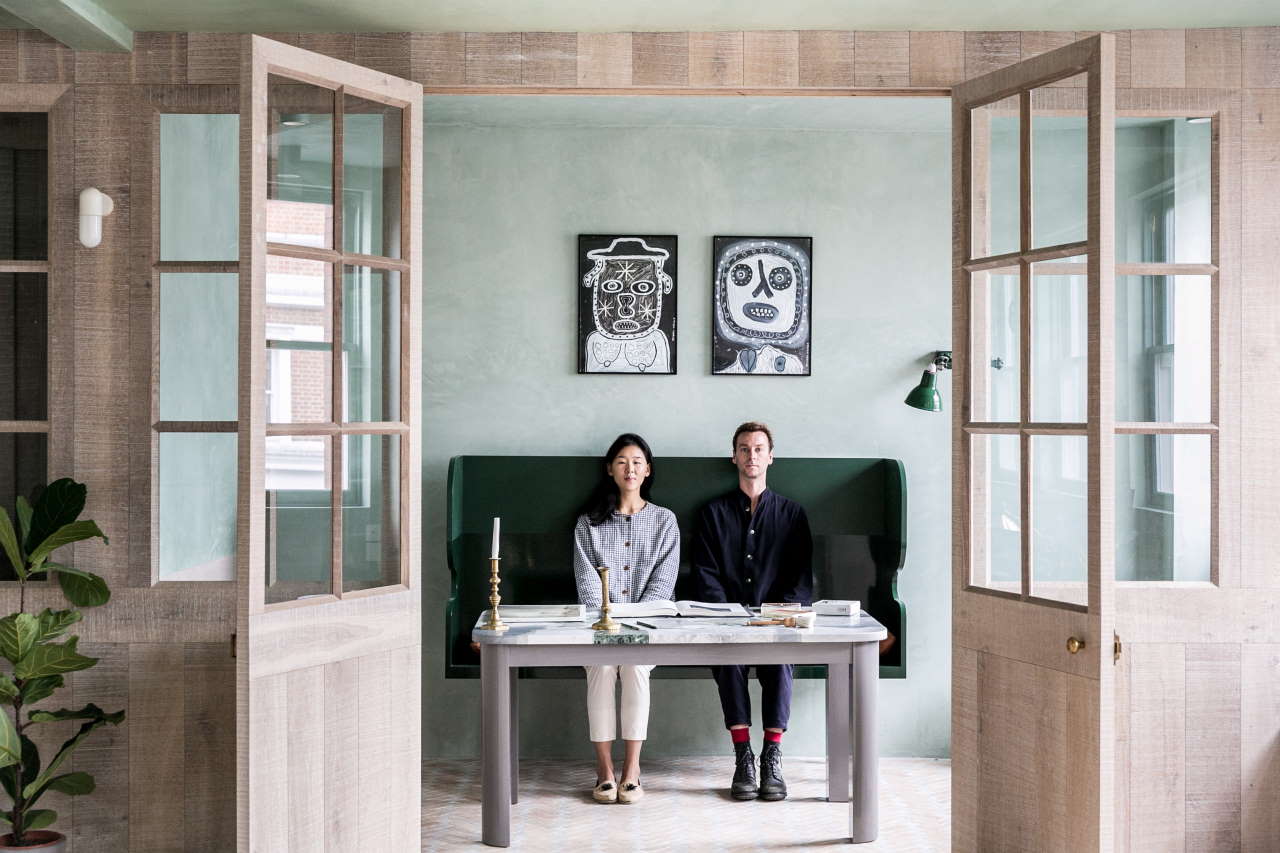
Photo by Taran Wilkhu.
The loft occupies an entire floor of a converted factory building, a rare occurrence which was one of the main reasons this site was chosen, along with the abundance of natural light, courtesy of the 30 original Crittall windows on all four sides, and the generous views over the treetops and Leonard’s Church next door. Instead of brainstorming over drafting boards or sketch books, the first thing Chan and Eayrs did when they acquired the property was to take out all of the walls and temporarily live in the empty space in order “to understand the light volumes and temperature at all times of the day”, as they explain. What came out of this pedagogical sojourn is an open-plan layout where, instead of conventional walls, the ‘rooms’ are delineated by the shifting patterns and borders of the handmade floor tiles.
Crafted out of handmade Moroccan tiles in their natural terracotta texture or in a glazed white version, laid out in Basketweave and Herringbone patterns—the latter a reference to their first ever project the Herringbone house—and interlocking geometries found in traditional courtyard houses in Suzhou, China, the loft’s floors are, in the couple’s own words, “a woven visual map of their travels and history”.
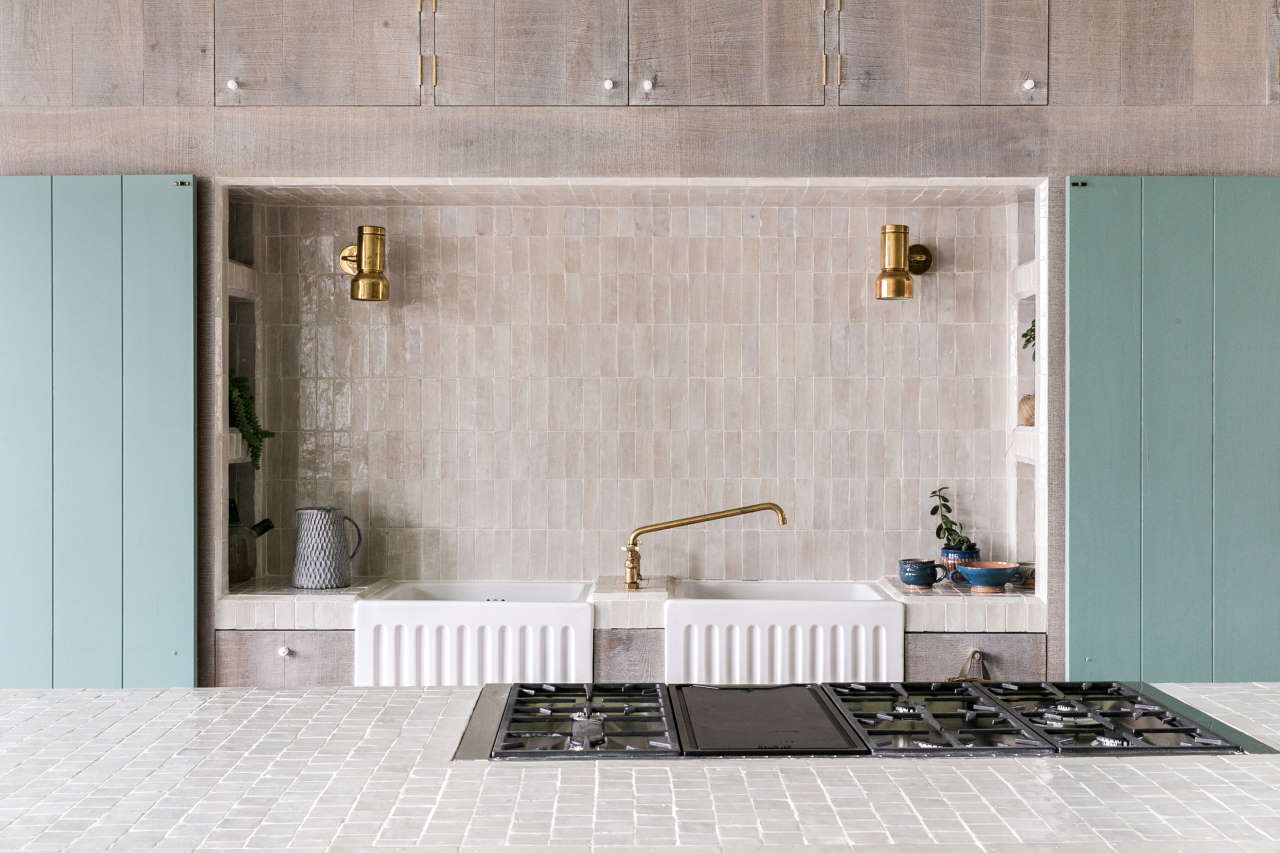
Photo by Taran Wilkhu.
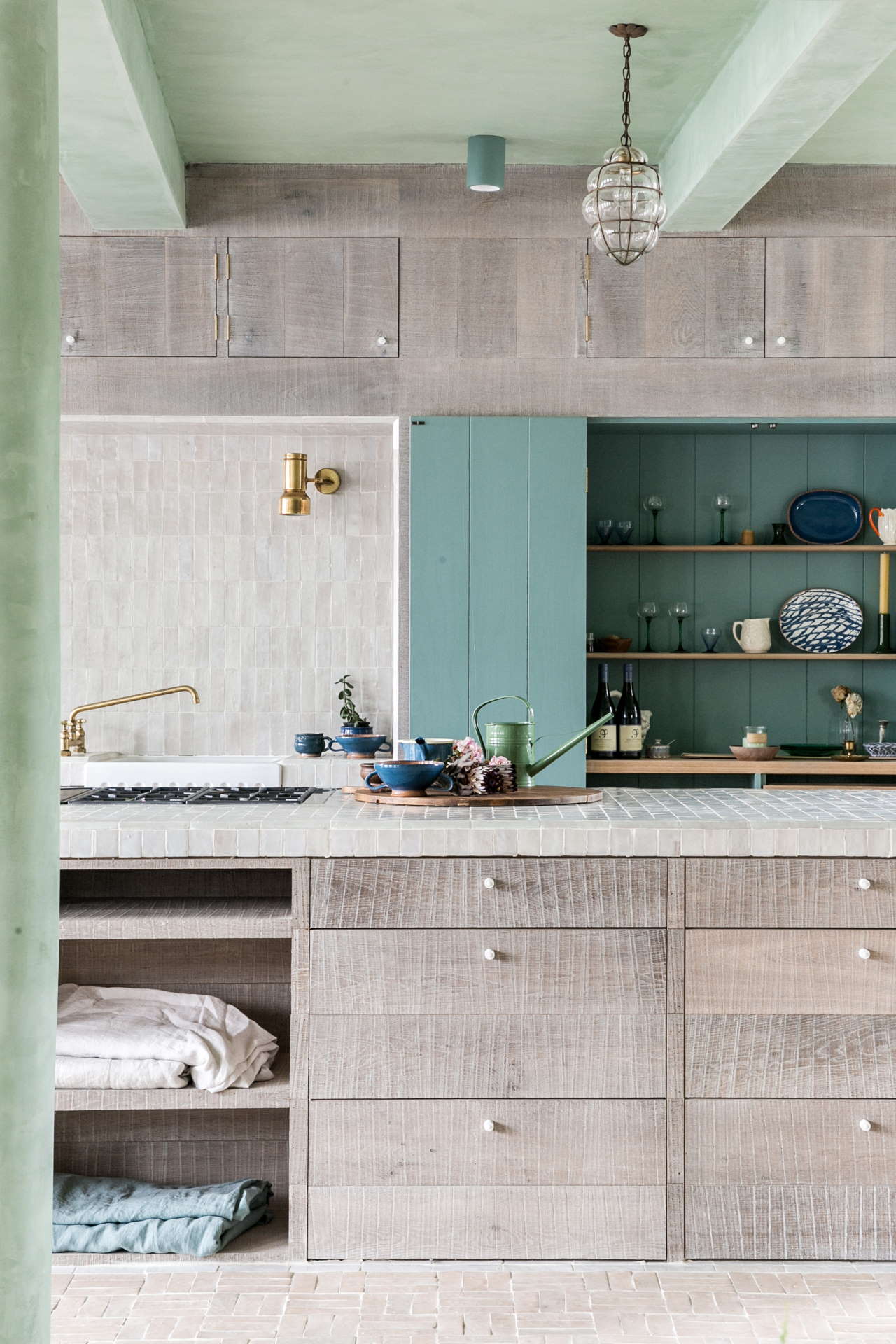
Photo by Taran Wilkhu.

Photo by Taran Wilkhu.
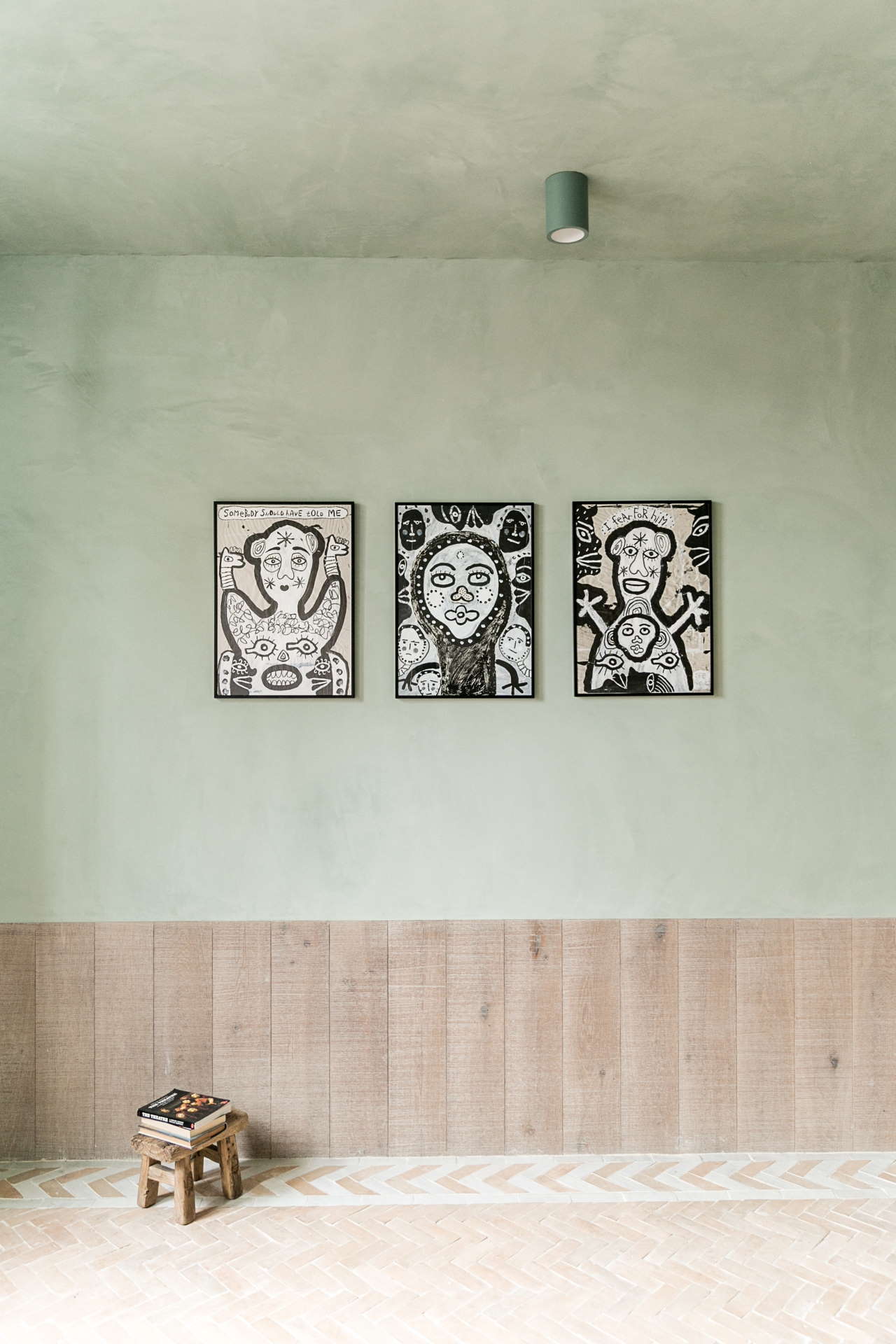
Photo by Taran Wilkhu.
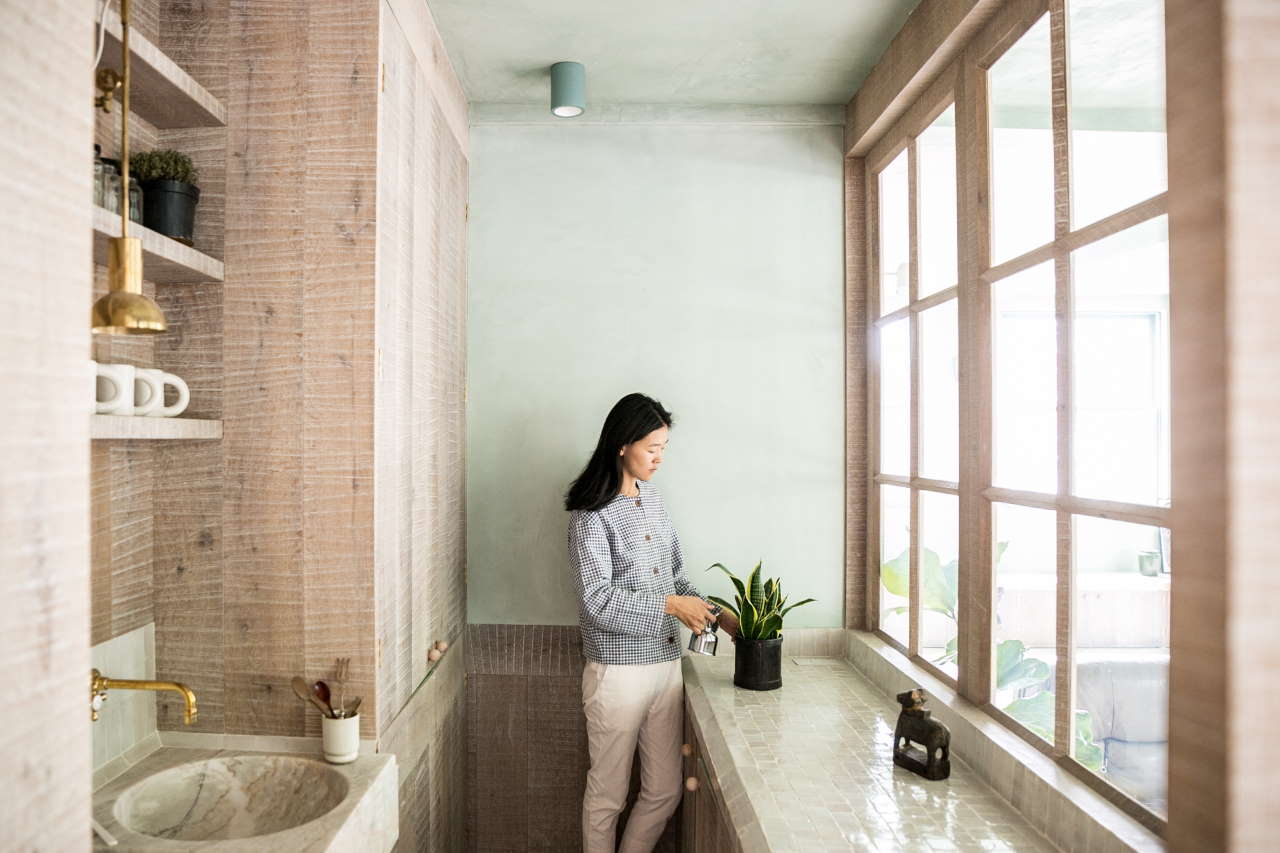
Photo by Taran Wilkhu.
The earthy terracotta hues of the floor tiles are complemented by a colour palette of soft greens that amplifies the verdant views outside, as well as evokes the feeling of being in a tree house, which is what test-living in the loft almost felt like to the couple. Pistachio-coloured walls and ceilings, made out of lime plaster mixed with a natural green pigment, fennel-green Crittall window frames, and darker green linen shutters, which were designed in collaboration with weaver Christabel Balfour and crafted on her loom, conjure a verdant ambience of tactile beauty.
Additional layers of green and blue hues, such as the painted timber cabinets—which were custom made on site for the project along with the panelled walls, doors, kitchen units, and built-in furniture—house plants, and hand-crafted glassware and ceramics, further enhance The Beldi’s textured, tactile and natural feel. It’s no coincidence after all that ‘beldi’ is a Moroccan word meaning traditional, handmade and local, concepts that this unique residence full-heartedly embraces.
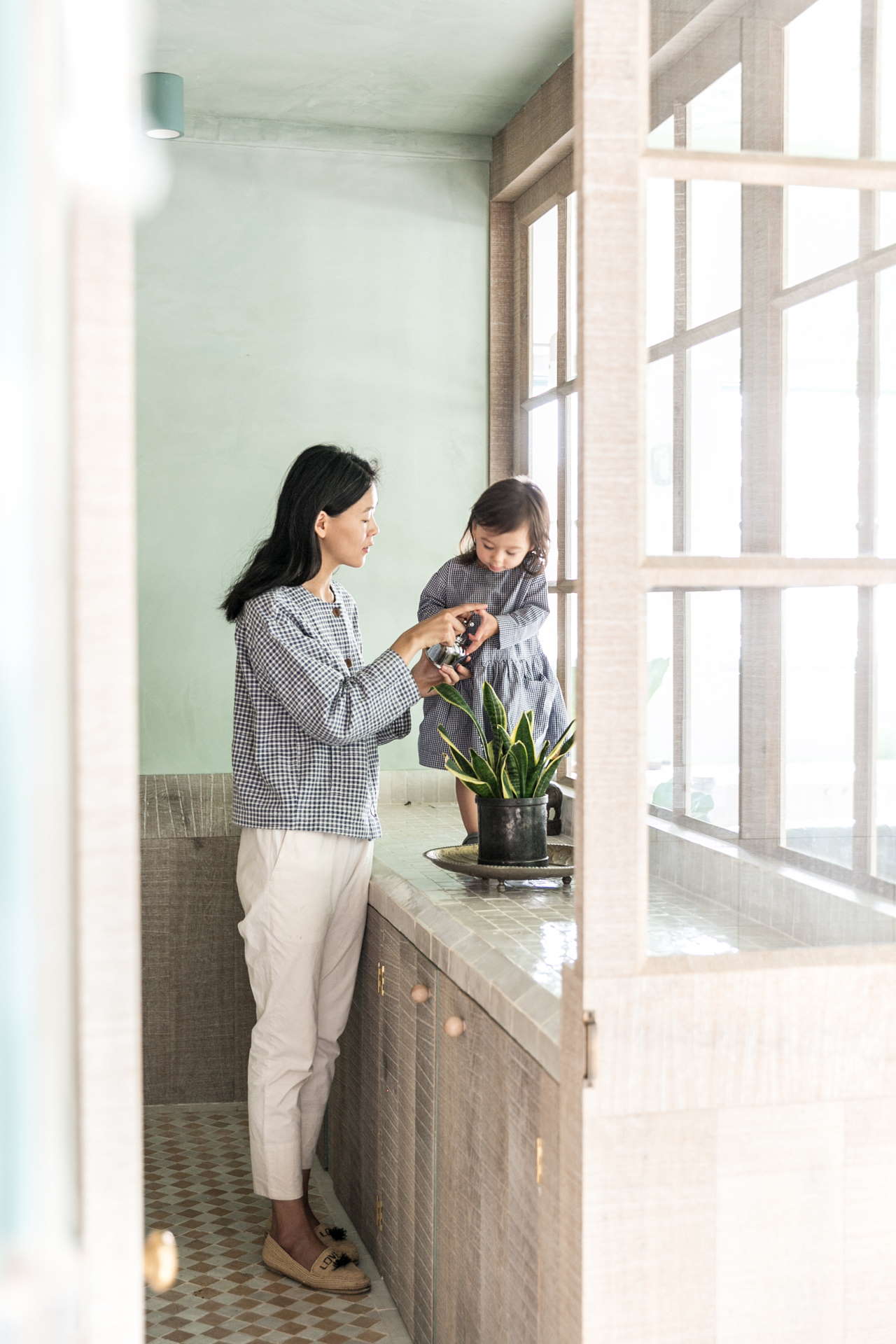
Photo by Taran Wilkhu.
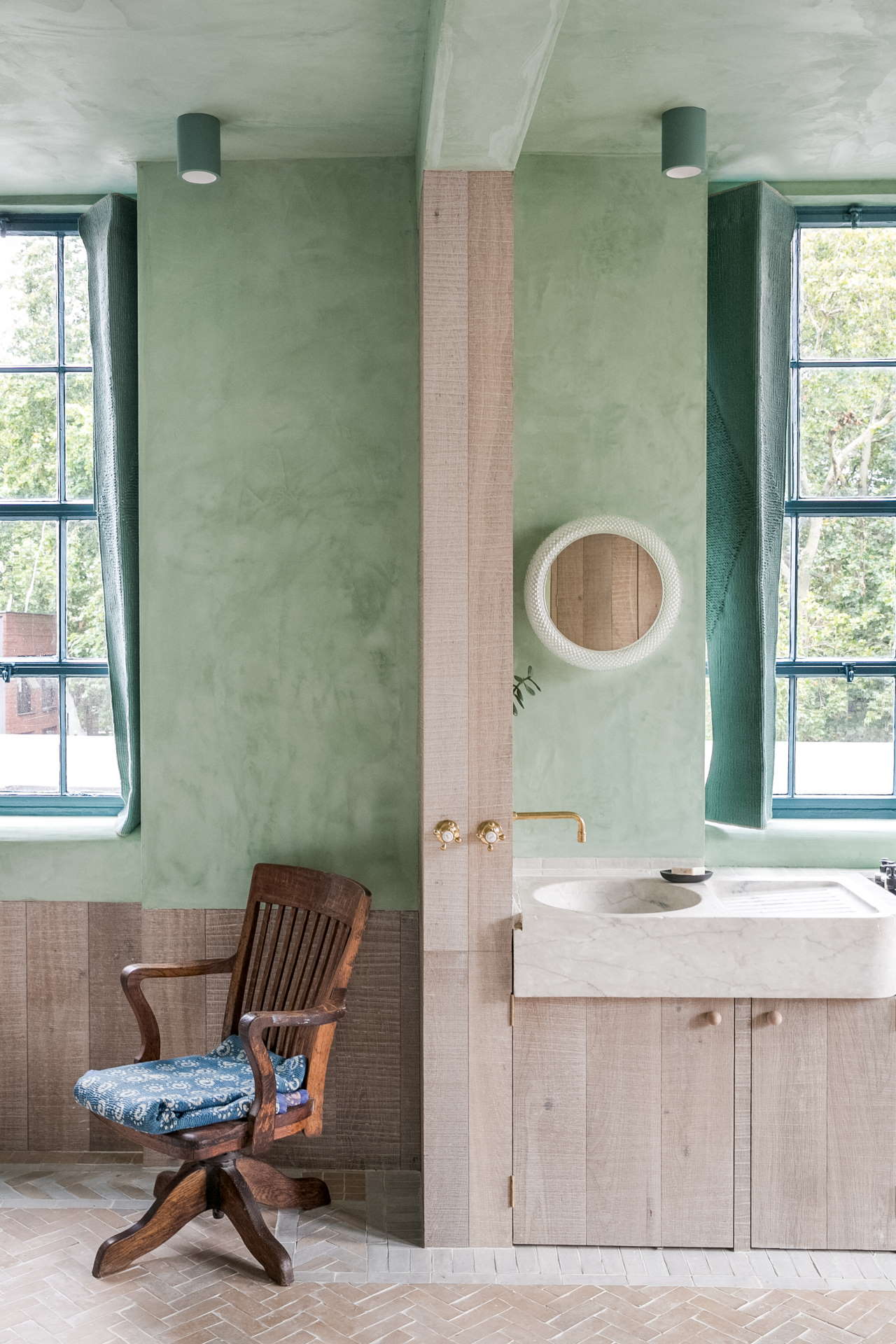
Photo by Taran Wilkhu.
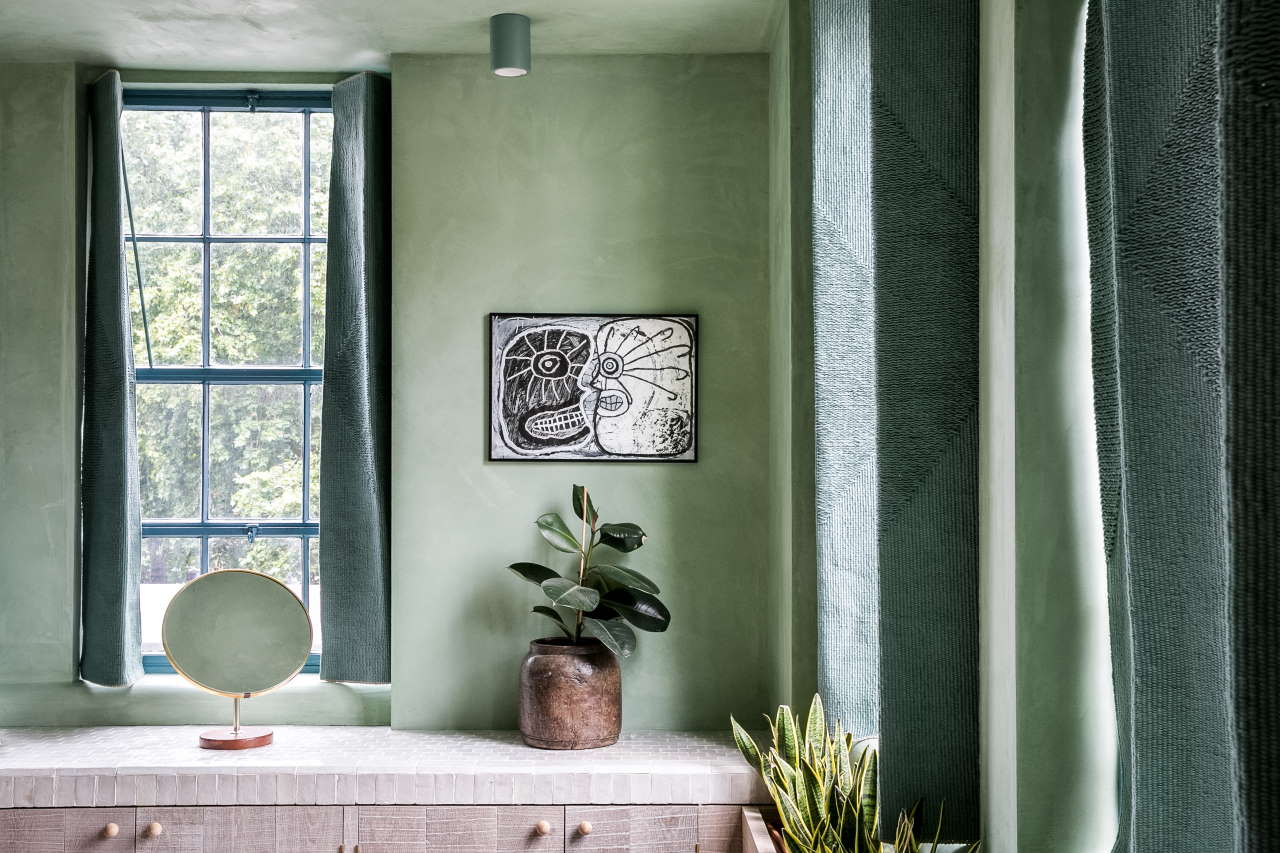
Photo by Taran Wilkhu.
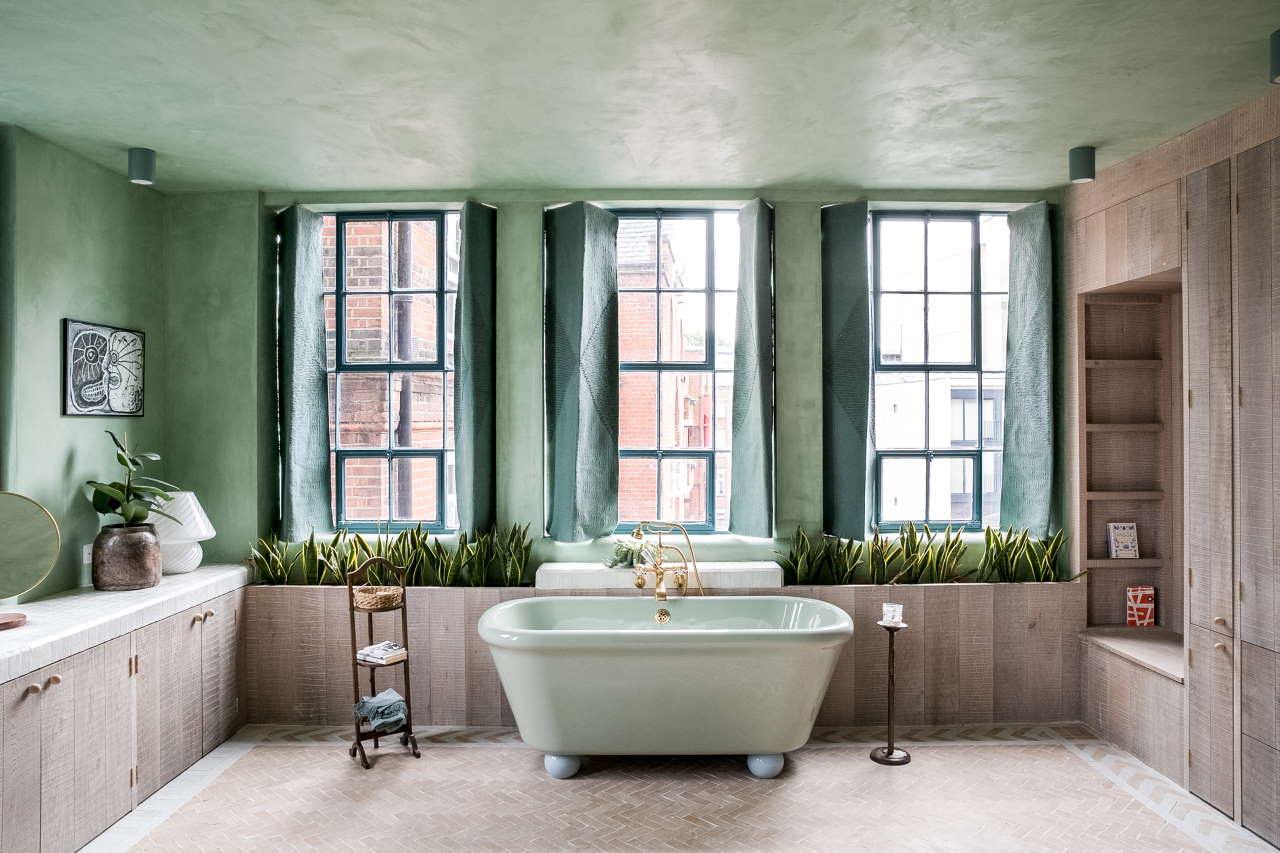
Photo by Taran Wilkhu.
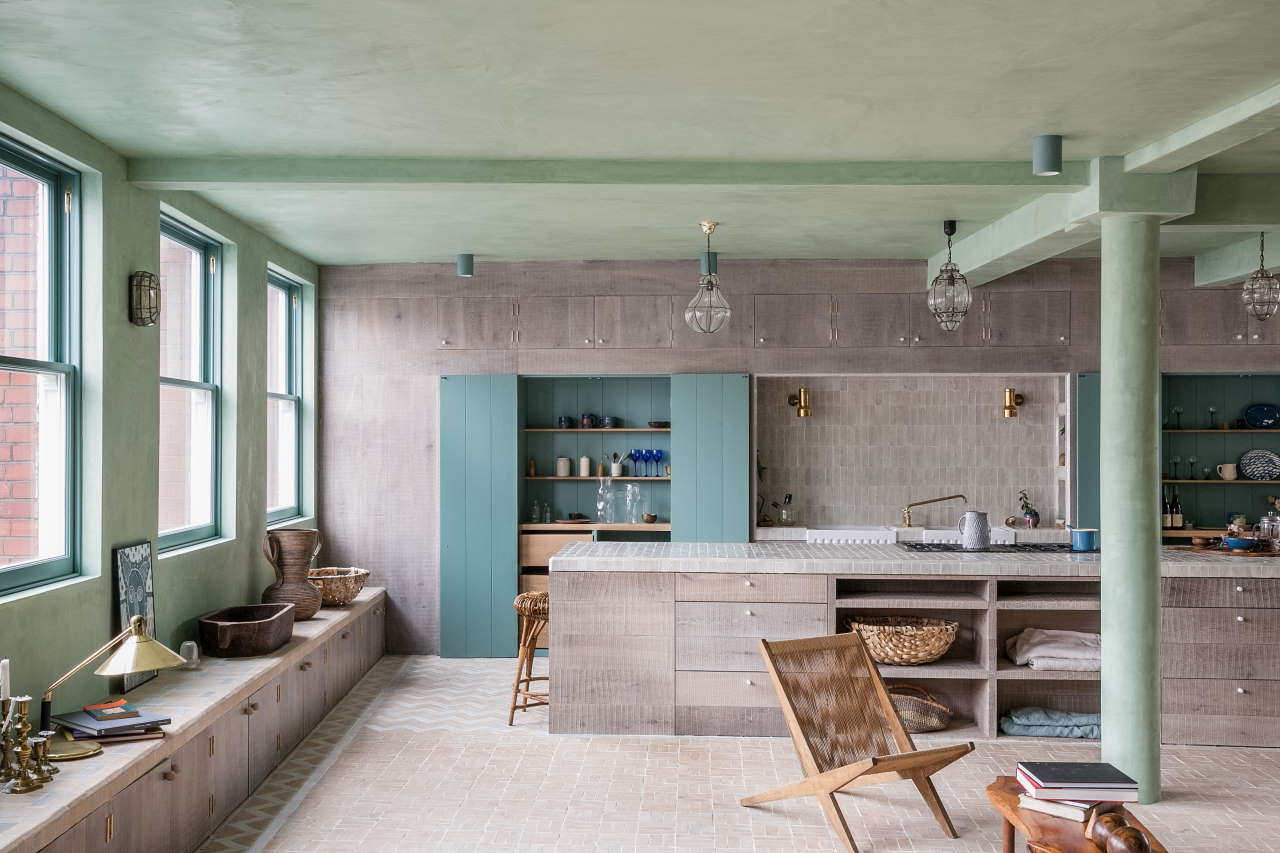
Photo by Taran Wilkhu.
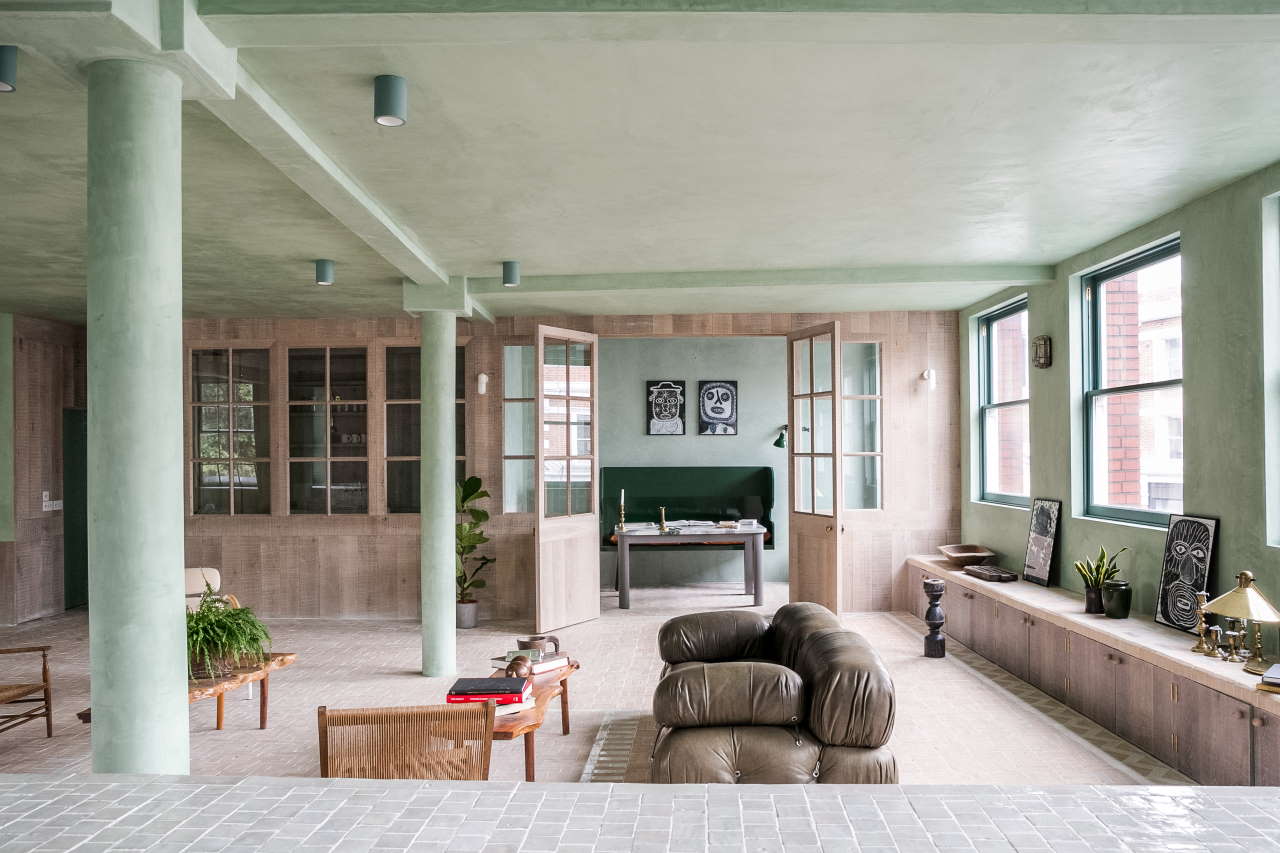
Photo by Taran Wilkhu.














